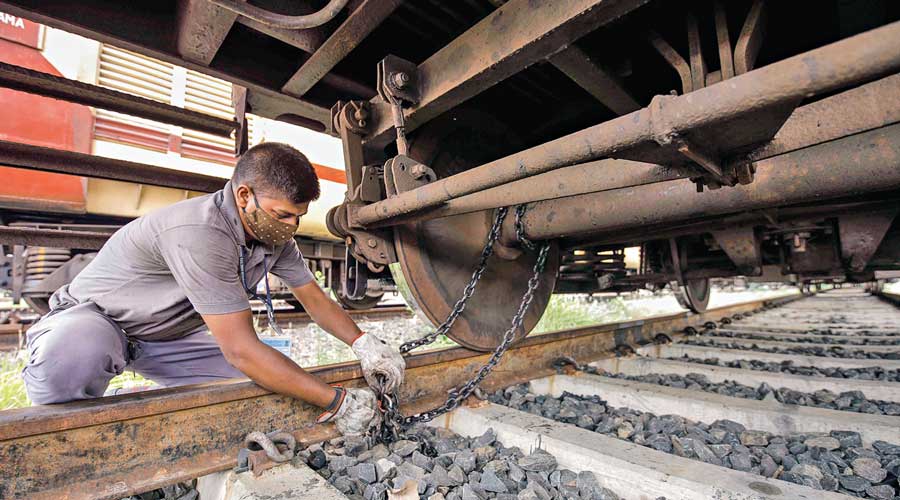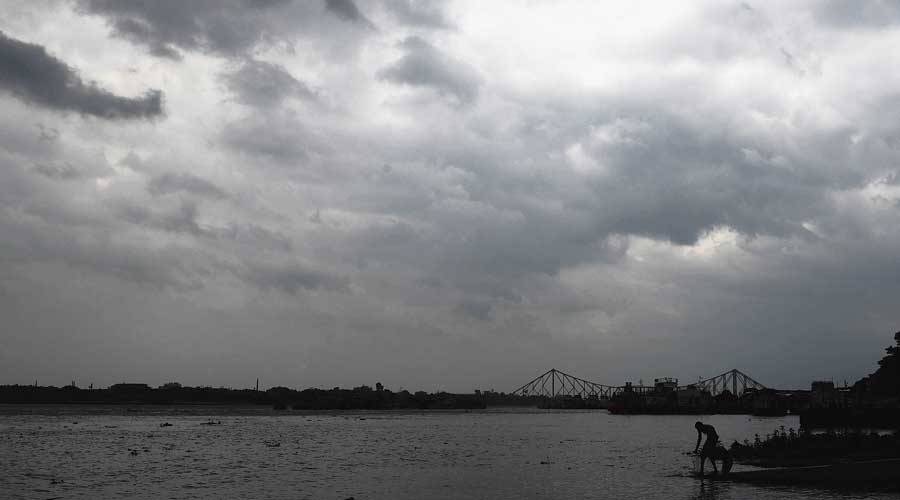A full moon and Cyclone Yaas together are likely to raise the water level of the Hooghly to almost 23 feet from the low-tide level on Wednesday and leave many parts of Calcutta inundated, port trust officials said.
Officials said that in normal circumstances the height of the water during high tide would be 6.01metres at 1.06pm in Garden Reach — the highest during the day — under the influence of a full moon. And the lowest would be 1.19metres at 9.32am.
"By our estimates, the height of the high tide in Garden Reach would go up by another metre because of the cyclone. So the height will be close to 7metres or 23 feet,” a port official said.
"That means large parts of Calcutta will be inundated. In some coastal areas, including Sagar Islands and parts of East and West Midnapore, the cyclone can cause the tidal wave to rise by up to two metres and large-scale inundation in adjoining areas."
Civic engineers said areas such as Kalighat, Bodyguard Lines in Alipore, Behala, South Port, Ekbalpore, Strand Road and Bagbazar might remain waterlogged for a long duration on Wednesday.
Some of the channels that drain water from the city to the Hooghly or the Bidyadhari river, including Tolly’s Nullah, will remain full with rain water on Wednesday.
The outlet channels of the city’s drainage network have sluice gates at the points they meet the Hooghly. During low tide, the water level of the Hooghly is lower than that of the outflow channels and hence there is no hindrance to the draining out of the accumulated water.
But during high tide, the water level of the Hooghly is higher than that of the channels. If the sluice gates are not shut during high tide, the river water will fill the underground drainage network.
On Wednesday, the sluice gates will be shut between 11.30am and 4pm. Civic engineers said the gates were usually kept closed from a couple of hours before the peak to a few hours after the peak.
Civic officials said if the sluice gates were not closed, the city’s underground drainage system would be filled with water from the Hooghly and the accumulated rainwater on the roads would not go down into the underground network.
With sluice gates closed, the underground network could soon get filled with water accumulated on the surface. And that will result in inundation as the network will not be able to drain out the water into the Hooghly.

A railway worker chains a train to the tracks in Howrah on Monday, ahead of the storm. PTI photo
As flooding is almost inevitable across large parts of the city, the police launched an evacuation drive. Till Tuesday evening, over 2,500 people in low-lying areas were shifted to safer places.
Of them, over 1,200 people were shifted from 65 premises in Garden Reach, Ekbalpore, Metiabruz, Rajabagan and Nadial to 42 temporary shelters jointly identified by the police and civic officials.
"The majority of the people shifted were from Nadial and Garden Reach," an officer of the Calcutta police's port division said.
The army has kept nine cyclone relief columns on "stand-by mode" for Wednesday. Officers said these teams were equipped to undertake evacuation of stranded or marooned civilians and also to clear roads by cutting trees.
"The columns will move as instructed by Nabanna,” a senior army officer said.











